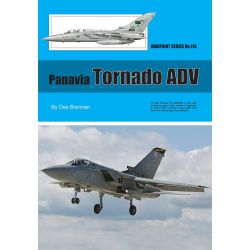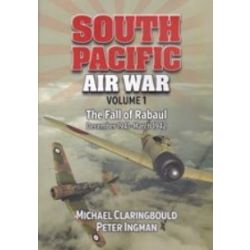Fermeture estivale du 1er août inclus au 22 août 2023
- Accueil
- › Aviation militaire - Seconde Guerre mondiale
- › Aviation Militaire US
- › P39/P400 AIRACOBRA VS A6M2/3 ZERO-SEN
Descriptif
After the huge advances made in the early months of the Pacific war, it was in remote New Guinea where the advance of Imperial Japanese Naval Air Force (IJNAF) A6M Zero-sen fighters was first halted due to a series of offensive and defensive aerial battles ranging from treetop height up to 30,000 ft.
Initially, the IJNAF fought Australian Kittyhawks, but by May 1942 they had fought themselves into oblivion, and were relieved by USAAF P-39 and P-400 Airacobras. The battles unfolded over mountainous terrain with treacherous tropical weather. Neither IJNAF or USAAF pilots had been trained for such extreme conditions, incurring many additional losses aside from those that fell in combat. Using specially commissioned artwork and contemporary photographs and testimony, this fascinating study explains how, despite their initial deficit in experience and equipment, the Airacobras managed to square the ledger and defend New Guinea.
Les avis sur le produit P39/P400 AIRACOBRA VS A6M2/3 ZERO-SEN
Nos clients ont aussi aimé
|
P39/P400 AIRACOBRA VS A6M2/3 ZERO-SEN
|
Ajouter au panier |
- Les Pionniers de l'aviation
- Aviation militaire - Première Guerre mondiale
- Entre Deux Guerres
-
Aviation militaire - Seconde Guerre mondiale
- Nouveautés Seconde Guerre mondiale
- Aviation Militaire Française
- Aviation Militaire britannique
- Aviation Militaire US
- Aviation Militaire russe - URSS
- Aviation Militaire - autres Forces Alliées
- Aviation Militaire Allemagne
- Aviation Militaire Italie
- Aviation Militaire Japon
- Aviation Militaire - Autres Force de l’Axe
- Opérations Front Ouest
- Opérations Front Méditerranée
- Opérations Front Est
- Opérations Front Pacifique
- Opérations Front Atlantique
- Aviation Militaire à Réaction
- Magazines Seconde Guerre mondiale
- Récits, Biographies Seconde Guerre mondiale
- Livres Divers Seconde Guerre mondiale
-
Aviation Militaire Contemporaine
- Nouveautés aviation militaire contemporaine
- Aviation militaire contemporaine française
- Aviation militaire contemporaine britannique
- Aviation militaire contemporaine US
- Aviation militaire contemporaine URSS, Russie, Pacte de Varsovie
- Aviation militaire contemporaine Europe et OTAN
- Aviation militaire contemporaine autres forces
- Guerre d'Indochine
- Guerre de Corée
- Guerre d'Algérie
- Guerre du Vietnam
- Guerre des Malouines - Falklands
- Guerres du Golfe - Irak - Afghanistan
- Autres Conflits Contemporains
- Hélicoptères Militaires
- Drones
- Magazines Aviation militaire contemporaine
- Collections Aviation militaire contemporaine
- Technologie - Prototypes - Expérimental
- Aviation militaire spécialisée - Transport - Espions - Surveillance
- Livres Divers Aviation militaire contemporaine
- Aéronavale
-
Aviation civile et Aviation Commerciale
- Nouveautés Aviation civile et aviation commerciale
- Aéropostale
- Aviation commerciale Avant Guerre
- L’Ere des Propliners - Les Hélices
- Jets Aviation commerciale
- Histoire des Compagnies Aériennes
- Registres Aviation commerciale
- Ouvrages Divers Aviation commerciale
- DVD Aviation commerciale
- Aéroports
- Magazines aviation civile et commerciale
- Catastrophes aériennes
- Formation personnel navigant
- Formation des pilotes aviation civile et aviation commerciale
- Livres divers Aviation commerciale
- Aviation française
- Hélicoptères - Autogires
- Aviation légère, aviation tourisme
-
Les Grandes Collections
- Nouveautés des Collections
- 4+ Publications
- Aerofax
- Les Ailes françaises
- Aircraft In Detail
- Air Doc
- Airdoc Smoke Trails
- AIRfile
- AJ Press
- Albatros
- Ali Straniere in Italia
- Airlife Combat Legend
- Ali d’Italia
- Altipresse : Histoires Authentiques
- Avions et Pilotes
- Batailles aériennes
- Camouflage & Markings
- Ciel de Guerre
- Coccarde Tricolori
- Daco
- Docavia
- Im Focus
- Ginter Air Force Legend
- Ginter Naval Fighters
- HT Model
- IBN
- Icare
- Kagero Legend of Aviation
- Kagero Lotniczne
- Kagero Monographie
- Kagero SMI Library
- Kagero Topcolors
- Kagero Top Drawings
- Kagero Units
- Kagero Topshots
- Luftwaffe at War
- Matériels de l'Armée de l'Air
- MBI Publishing
- Mini Docavia
- Mushroom
- Nordic Air Power
- Osprey Aircraft of the Aces
- Osprey Air Vanguard
- Osprey Airwar
- Osprey Combat Aircraft
- Osprey Duel
- Osprey Elite
- Osprey Modelling
- POL
- Rae
- Red Star
- SAM Air Data
- SAM Modeller Datafile
- Squadron Signal in action
- Squadron Signal In Detail and Scale
- Squadron Signal spéciaux
- Squadron Signal Walk Around
- Suomen Ilmavoimien Historia (Filnande)
- Warbird Tech
- Warpaint
- Warplane
- WAW
- Wings of the Black Cross
- Wingmasters Hors série
- WYD
- Bandes Dessinées - Ouvrages de Peintures - Photos aviation
-
Maquettes à monter et Die-Cast
- Nouveautés maquettes à monter et Die Cast
- Trumpeter/Revell/Roden/RS Models à monter 1/72ème
- Accessoires Aéroport
- Dragon Milit. 1/72
- Dragon militaires 1/400
- Herpa 1/500
- Herpa 1/400
- AZUR/FRROM maquettes à monter 1/72ème
- A&A Models/ACADEMY/AIRFIX/AMODELARMA HOBBY/AZUR/DORA WINGS/FRROM/SPECIAL HOBBY maquettes à monter 1/72ème
- Hasegawa/Heller/Hobby Boss/IBG/ICM/ITALERI/Mister Craft/ZVEZDA-maquettes à monter 1/72ème
- Gemini Civil 1/400
- Dragon civil 1/400
- Divers Modèles à monter et Die Cast
- Multimédia
- Conquête spatiale, espace
- Calendriers, Histoire militaire, jeux, sets de peintures et produits divers
- LE KIOSQUE
Informations




